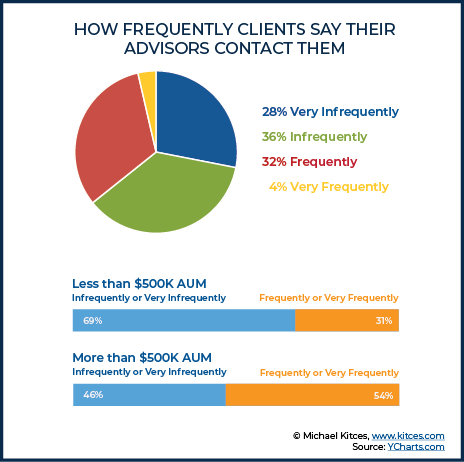Communication – The Bridge to Stronger Relationship Between Financial Advisor and Client
Written by Amit Shah®●March 22, 2023●3 min read
In the age of smartphones, social media, and live streams, any information can be accessed easily almost in real-time. This has raised the bar on expectations of the clients. For financial advisors, that means an annual face-to-face meeting and quarterly reports is becoming unsatisfactory and insufficient. When asked about how often their advisor contacts them, 28% respondents said that they hear from their advisor ‘very infrequently’, a survey reports.
As advisors strive to differentiate themselves from competition and relate to the new generation of clients, one old-fashioned technique emerges as the answer: be a better communicator.
Clients agree that they value their advisor’s ability to anticipate their needs and contact them in advance and define proactive communication as important. They also feel more frequent contact would give them additional confidence in the financial plan that their advisor has built for them.

Adding to the need for proactive & frequent contact, clients also seek personalized communication that is hyper-relevant to them. Clients want their advisor to share updates that are personalized to them. Specifically, news articles, statistics, or visuals relevant to their portfolios.
Most clients would like to communicate across various channels via email, text and social media; Facebook and LinkedIn are usually the two most commonly preferred social media channels.
Even the frequency and style of advisors’ communication directly impacts clients’ confidence in a financial plan, the likelihood of retaining an advisor, and the willingness to refer their advisor to family and friends. Increased engagement during critical life decisions (such as right before retirement, or marriage) could have a considerable impact.
Understanding the clients’ goals and priorities is integral to developing a sound financial plan, and clients are looking for advisors who fulfill this. By acknowledging client goals, building a plan that addresses them, and communicating in a way that demonstrates his understanding, advisors can maximize the value they add to clients’ lives, and offer a premier level of service.
To follow through on contacting clients more frequently, advisors need to commit to a cadence with new communication strategy building and accountability by defining and sticking to it.
The clients feel marginalized and aren’t regularly engaged by their advisor. This engagement gap is an opportunity for advisors to differentiate themselves by creating new touch points. By staying top-of-mind with clients, advisors can easily provide a superior level of service and stand out from their peers. It is an excellent chance to show value to the client.
Clients’ demand for use of communication channels like text messaging, email and social media also creates new avenues for advisors to explore and find a channel-mix that works best for their clientele.
Clients feel that being understood, and having their goals understood, is the most important factor when selecting a financial advisor. If advisors focus on connecting with their clients, they can support their clients’ goals, and ultimately provide a better client experience.
Success of an advisor can be directly impacted by the communications strategy used. For implementing better all-round communication a framework can be created which takes a process-oriented approach to communications and targets client engagement into different types. Communication for all clients and prospects – like quarterly market perspectives, industry thought leadership or response to recent market events, changes in your firm policies, and sharing interesting, topical information.
Personalized communication for key accounts and prospects – like monthly portfolio updates for high-net-worth clients and research related to their goals or during important periods in the advisor-client relationship – like prospect proposals and responses to client inquiries.
Clients value the advisor’s experience and expertise in financial planning and investing. For the best result and effective client-advisor relationship, the core idea is to keep the frequency of communication while respecting the wariness of clients for information overload.
Have you started staying in touch with your clients more regularly?